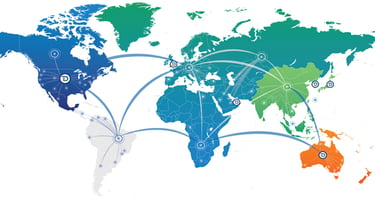The digital landscape continues to evolve rapidly, with website performance and user experience...
Maximizing Website Performance: Advanced CDN Strategies for 2024
To craft a comprehensive article on "Maximizing Website Performance: Advanced CDN Strategies for 2024," we can synthesize insights and strategies from various sources to form a deep exploration of how to optimize website speed and efficiency using Content Delivery Networks (CDNs) and other performance-enhancing techniques.
Advanced CDN Utilization Strategies
In conclusion, advanced CDN strategies combined with a holistic approach to website performance optimization can lead to significant improvements in website speed, user experience, and SEO performance. Implementing these strategies requires a careful balance between technical optimizations, cost management, and ongoing performance monitoring to ensure that websites are fast, reliable, and capable of serving a global audience efficiently in 2024.
Advanced CDN Utilization Strategies
- Leveraging CDNs for Global Reach: CDNs play a crucial role in minimizing latency by caching static content across a network of globally distributed servers. This ensures users access data from the closest server, significantly enhancing load times.
- Cache Control Mastery: Understanding and implementing cache control directives can dramatically impact CDN efficiency. By setting appropriate cache lifetimes and understanding cache invalidation, you can ensure timely content updates while maximizing cache usage.
- Edge Computing Integration: Integrating edge computing with CDNs can reduce response times by processing requests closer to the user, improving overall CDN performance. By strategically placing edge servers, you can significantly cut down on round-trip times and enhance user experience.
- Dynamic CDN Switching: This involves real-time performance monitoring and automatic traffic routing to the most efficient CDN, optimizing cost and performance. Dynamic switching ensures traffic is always routed to the best-performing CDN, reducing costs and improving site spee.
- Financial Aspects of CDN Strategies: A multi-CDN strategy involves analyzing initial setup costs, ongoing maintenance expenses, and potential savings. This comprehensive financial planning ensures that the performance benefits outweigh the costs.
- Modern Protocols and Traffic Offloading: Embracing HTTP/2 and other modern protocols that allow for parallel resource delivery can significantly reduce website load times. Offloading traffic to CDNs alleviates the load on origin servers, enabling them to focus on dynamic content.
- Security and Scalability through CDNs: Including DDoS protection, web application firewalls, and bot mitigation in your CDN setup can protect against malicious attacks, ensuring uninterrupted service availability.
- Performance Monitoring and Analytics: Utilizing CDNs' built-in tools for monitoring traffic and performance metrics allows for ongoing optimization, identifying and addressing bottlenecks to further enhance site speed.
- SEO Impact of Improved Website Speed: Faster site speeds contribute to better user experience, lower bounce rates, and faster crawling and indexing by search engines. These factors collectively enhance SEO, making website speed optimization a crucial component of digital marketing strategies.
- Optimization Best Practices: Beyond CDN strategies, optimizing images, reducing HTTP requests, leveraging browser caching, minimizing render-blocking JavaScript, and controlling external scripts are essential for improving website speed.
- Core Web Vitals and User Experience: Google's Core Web Vitals, including metrics like Largest Contentful Paint (LCP), First Input Delay (FID), and Cumulative Layout Shift (CLS), are critical for assessing a website's performance. A focus on these metrics can lead to improved user experience and higher search rankings.
In conclusion, advanced CDN strategies combined with a holistic approach to website performance optimization can lead to significant improvements in website speed, user experience, and SEO performance. Implementing these strategies requires a careful balance between technical optimizations, cost management, and ongoing performance monitoring to ensure that websites are fast, reliable, and capable of serving a global audience efficiently in 2024.


